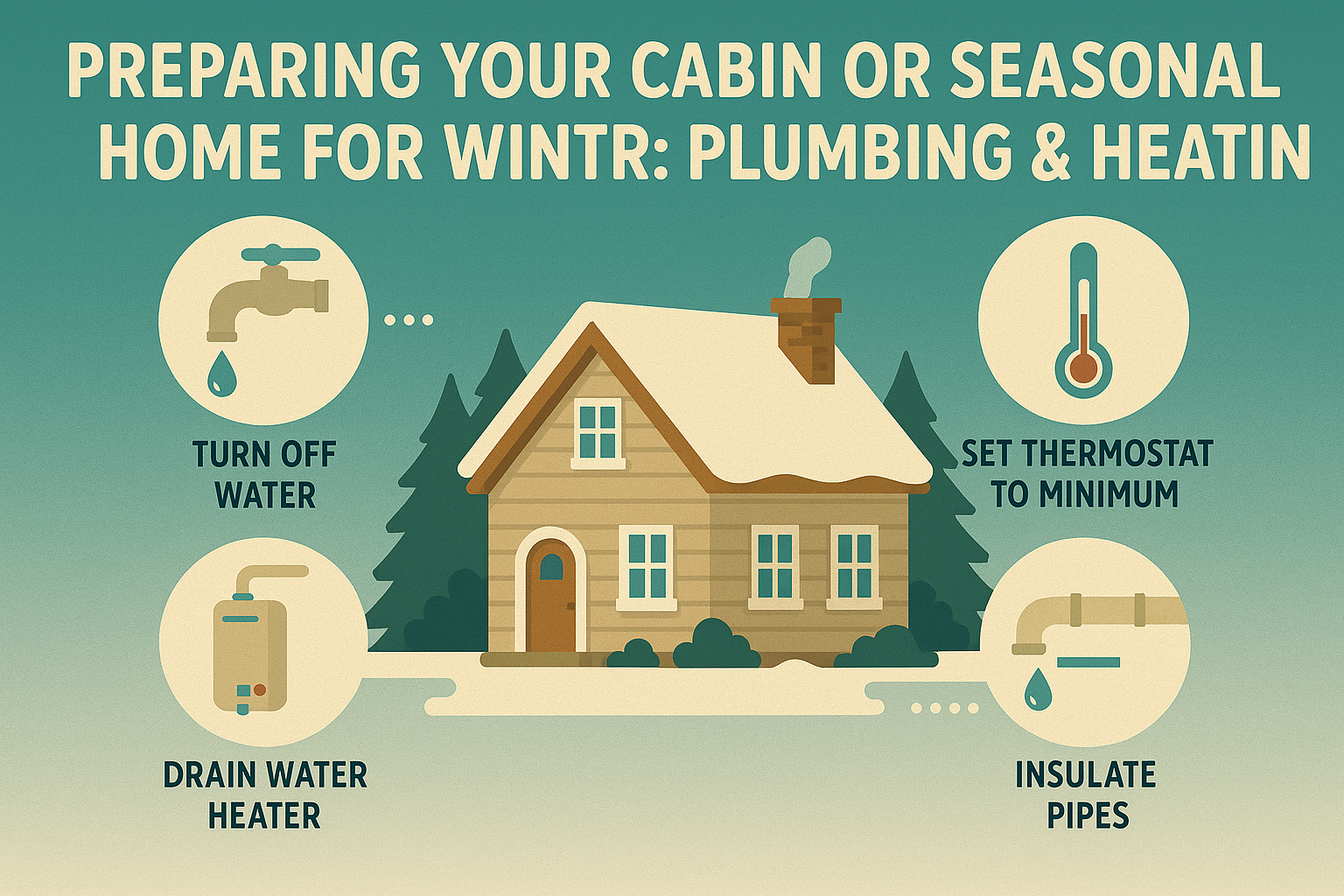Inspect Your Plumbing System Thoroughly
Before freezing temperatures hit, inspect all pipes. Focus on exposed plumbing in crawl spaces, basements, and attics.
Check for cracks or corrosion. Even minor damage can lead to leaks or bursts during a freeze.
Insulate pipes using foam sleeves or wrap insulation tape around vulnerable areas.
Drain and Shut Off Outdoor Water Lines
Outdoor water lines are prone to freezing. Shut off exterior water valves from inside your cabin.
Drain all hose bibs and disconnect garden hoses. This helps prevent pipe bursts.
If you’re leaving for the season, completely drain the system or use an air compressor to blow out lines.
Seal Gaps and Cracks
Cold air can enter through small gaps. Inspect the foundation, windows, and walls.
Seal with weather-resistant caulk or expandable foam. This reduces drafts and protects interior plumbing.
Pay special attention to pipe entry points.
Winterize Your Water Heater
If the cabin won’t be used during winter, turn off the water heater.
Drain it completely to avoid sediment build-up and freezing issues.
If you’ll be staying, insulate the heater with a jacket or blanket to reduce energy loss.
Keep Interior Temperatures Stable
Set your thermostat to at least 55°F (13°C).
Even when you’re away, maintaining a stable temperature prevents pipes from freezing.
Use smart thermostats for remote control and real-time monitoring.
Consider Antifreeze for Drains
Add non-toxic RV antifreeze to drains and toilets.
It prevents water from freezing and damaging traps or seals.
Don’t forget to flush and fill toilets and sinks before adding antifreeze.
Check and Clean Your Furnace
Test your furnace before winter begins.
Clean or replace filters for better airflow.
Schedule professional maintenance if needed. A reliable furnace keeps plumbing safe and your space comfortable.
Inspect the Chimney and Vents
If your heating relies on wood stoves or fireplaces, inspect the chimney.
Remove soot and creosote buildup to prevent fire hazards.
Ensure vents and flues are clear for proper ventilation.
Install Pipe Heating Cables
In extremely cold regions, use electric pipe heating cables.
They maintain pipe temperature and prevent freezing.
Follow manufacturer instructions carefully during installation.
Shut Off the Main Water Valve
If your cabin stays unoccupied, shut off the main valve.
This minimizes the risk of flooding due to frozen or burst pipes.
Also, leave faucets slightly open to relieve pressure.
Monitor Humidity Levels
Dry winter air can damage wood and plumbing components.
Use a humidifier to maintain balanced indoor humidity.
Keep it between 30–50% to avoid condensation or mold.
Bonus Tip: Schedule Professional Winterization
Hire a plumber for a complete winterization service.
Professionals can winterize your water heater, drain lines, and inspect heating systems in detail.
It’s a small investment that prevents major repairs.
Final Thoughts
Winterizing your cabin ensures peace of mind.
From protecting pipes to checking the furnace, these tips keep your seasonal home safe.
Act early, stay prepared, and enjoy a stress-free winter season.


